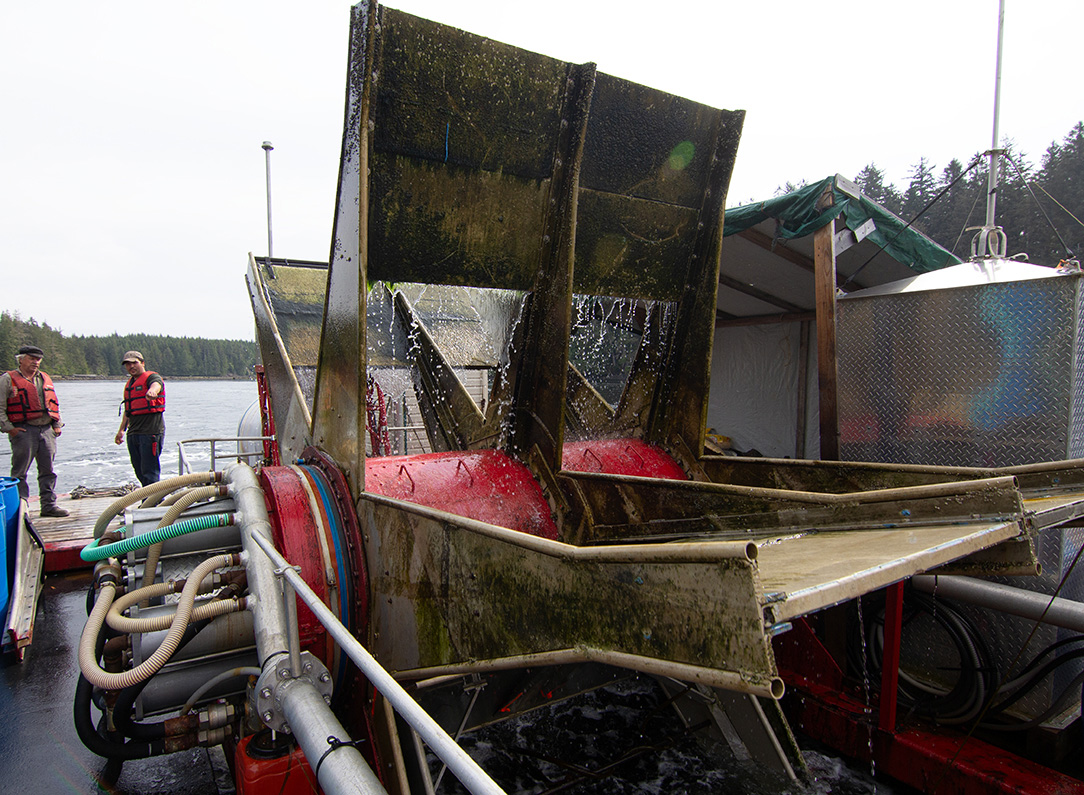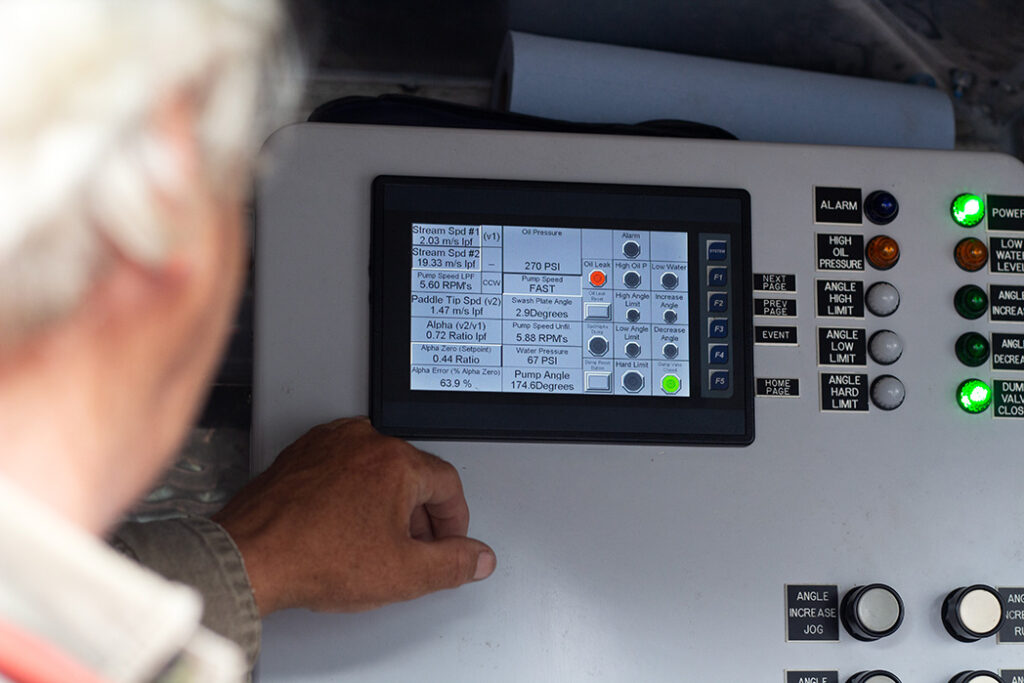
After a bit of slack, things are flowing again for a working tidal-power project on Haida Gwaii.
Engineers are nearly halfway through a $1.5-million design study needed to get the Kamdis Tidal Demonstration Project ready to build.
Driven by the tide rushing in and out of Masset Sound, and also by pumped seawater returning from an uphill reservoir when the tide slacks, the Kamdis demo project could supply about 500 kW to Haida Gwaii’s northern electrical grid.
That is enough clean power to displace about 1.8 million litres of diesel — a fifth of the roughly 8 million litres burned at the Masset power station every year.
At the heart of the Kamdis demo project is a water wheel and a variable-speed pump invented by islander Laird Bateham.
Bateham got his inventing feet wet by designing a small run-of-river hydro system to power his Maude Island farm in the fall, winter, and spring.
In 2010, he and three other Haida Gwaiians co-founded Yourbrook Energy Systems (YES) to develop his tidal-power idea. In 2016, they launched a towable prototype of the tidal pump, water wheel, and control computer.
Getting to the engineering stage for a working, grid-connected version took years longer than planned.
But Bateham remains optimistic the Kamdis project will show the technology works, inspiring follow-up projects here and elsewhere that get even better results.
“We’re innovators, we’re not engineers,” Bateham said.
“The Wright brothers weren’t worried about Boeing’s 747 when they took off. Somebody’s got to get it out there, and other people will come along and improve it.”

Bateham spoke to the Haida Gwaii News over the slow, splash-ker-splash sound of Yourbrook’s prototype pump, which floats on pontoons and is anchored at Juskatla Narrows.
Yourbrook had originally planned to build its first grid-connected system at the narrows, too.
But the Haida hereditary chiefs raised cultural concerns about building there.
Unlike the free-floating prototype, the demo project will include pilings, a pier, and a platform below the water wheel that has a tapered channel to accelerate the tidal currents. On land next to it, the project includes a small building for the hydro turbine and an uphill water reservoir connected by a penstock, power lines, and access road.
“We respect their wishes,” said Bateham, speaking of the hereditary chiefs’ decision.
Working with the CHN’s Heritage and Natural Resource Committee, Yourbrook looked at four other sites for the project before choosing one on the eastern shore of Masset Sound in the Kamdis Conservancy, the only Haida Gwaii conservancy that allows for tidal-power projects.
Tidal currents at the Kamdis site run roughly twice as slowly as they do at the narrows, and the slack period there is also much longer, lasting two to three hours instead of 15 to 20 minutes.
On the other hand, the Kamdis site has better access to power lines and roads. The site is about 500 metres west of Highway 16 where it passes Pure Lake.
And the weaker currents at the Kamdis site led Yourbrook to invent a more efficient way to harness the push of the tides — dynamic blades for the water wheel.
By fitting the water wheel with blades that drop down as the wheel turns, the improved system creates an oval-shaped blade path that can sweep 2.5 times more water.
That is a much better option than simply building a bigger water wheel. At the Kamdis site, the wheel would have had to be giant, maybe 15 metres in diameter, to get required power.
Engineering work is still underway, but with the dynamic blades, the water wheel for the demo project will likely be almost half the size, with a diameter of eight or nine metres.
Meanwhile, at Juskatla Narrows, the floating prototype Yourbrook launched in 2016 for two summers’ worth of testing is still spinning out data some 6,000 hours later.

After testing a mini version of a dynamic-blade water wheel with a boat on Mayer Lake, they fitted one to the original prototype and charted the difference in power output.
Jon Yalte, who joined Yourbrook in 2018 as director of field operations, said the prototype has survived big logs passing through it, and it stays remarkably clean. He and others check it about twice a week.
“It barely fouls up at all,” Yalte said, adding that most of its barnacles got attached when they had to dock it in Port to fix a a badly made bearing.
At the Kamdis site, Yalte is helping with intertidal biology surveys to identify any species that are protected or of Haida cultural interest. Yourbook also has professional marine biologists on staff, and the design study includes environmental, archaeological, and geotechnical studies along with measures of the tidal currents.
Once the design study is finished, likely this March, the Kamdis demo project could be built and commissioned as soon as the spring of 2026.
In a 2022 licence application for the Kamdis site, Yourbrook estimated the demo project would create 30 or 40 temporary construction jobs, and six to eight permanent jobs to operate the plant. Overall, Yourbrook estimated the project could input $3.5- to $4-million into the local economy.
The front-end engineering and design for the Kamdis project received $1.3 million from Wah-ila-toos: the Clean Energy Initiatives in Indigenous, Rural, and Remote Communities fund run by Natural Resources Canada.